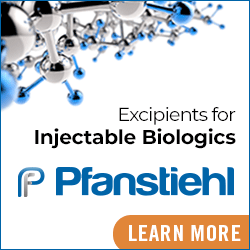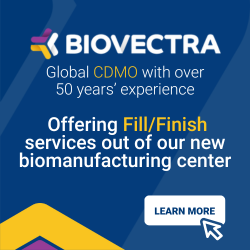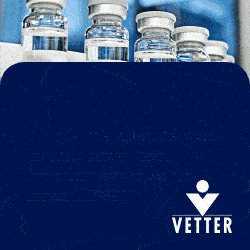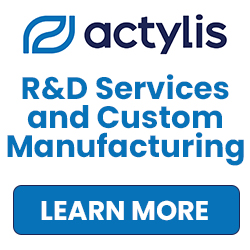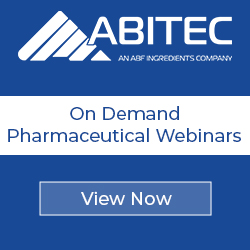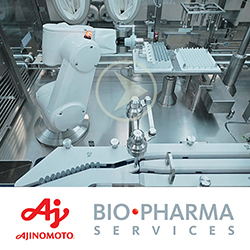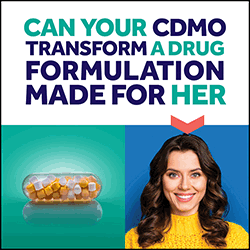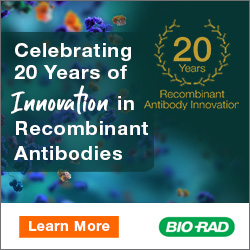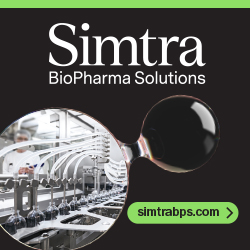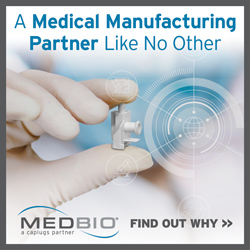Search Results for: SPECIAL FEATURE Prefilled Syringes Parenteral
Articles
SPECIAL FEATURE - Prefilled Syringes & Parenteral Manufacturing: Innovations, Challenges & Solutions May 5, 2020
Contributor Cindy H. Dubin features several leading companies’ innovations in delivery devices as well as how contract parenteral manufacturers are addressing the ever-demanding challenges, issues, and opportunities related to delivering biologics and small molecules.
SPECIAL FEATURE - Prefilled Syringes & Parenteral Manufacturing: Flexibility for Faster Development April 30, 2019
Contributor Cindy H. Dubin interviews several contract manufacturers and device developers who are responsible for creating next-generation parenteral drug delivery.
SPECIAL FEATURE - Prefilled Syringes & Parenteral Manufacturing: Drug & Packaging Ensure Safety, Compatibility & Stability May 31, 2018
Contributor Cindy H. Dubin highlights some of the key players in the market and where they are focusing their efforts to ensure products are of the highest quality, safe, and easy to use.
SPECIAL FEATURE - Prefilled Syringes & Parenteral Manufacturing: A Rise in Biologics & Improved Technology Give Pharma Reasons to Consider Parenteral Delivery May 2, 2017
Contributor Cindy H. Dubin speaks with some of the leading companies in this market to find out about key trends, packaging advancements, safety improvements, and technology developments.
SPECIAL FEATURE - Prefilled Syringes & Parenteral Contract Manufacturing: Biologics Present a New Set of Challenges May 2, 2016
Contributor Cindy H. Dubin speaks with leading syringe developers and contract manufacturers to discuss how they are overcoming industry challenges and provides a look at some of the innovative advancements in prefilled syringe technology.
SPECIAL FEATURE - Prefilled Syringes & Parenteral Contract Manufacturing: Anticipating the Needs of the Future May 5, 2015
Contributor Cindy H. Dubin speaks with several companies in the prefilled syringe and parenteral manufacturing market that are offering a range of services and systems that cater to today’s issues as well as anticipating the needs of the future.
SPECIAL FEATURE - Prefilled Syringes & Parenteral Contract Manufacturing - Product Differentiation Is Critical May 8, 2014
Contributor Cindy H. Dubin speaks with several of these suppliers and manufacturers about the importance of customization and differentiation as the key to pharma companies staying competitive in the prefilled syringe space.
SPECIAL FEATURE - Injection Devices: Designing in Sustainability, Usability & Digitization for Patient Compliance September 5, 2023
Contributor Cindy H. Dubin, in this exclusive annual feature, highlights how leading device and drug companies are working to address the challenges of usability, sustainability, and technology to increase patient compliance.
SPECIAL FEATURE - Outsourcing Formulation Development & Manufacturing: Putting Customers First June 5, 2023
Contributor Cindy H. Dubin speaks with several leading CDMOs from around the globe on their unique development and manufacturing capabilities and technologies, and presents real-world examples of how they have put these to use to produce innovative compounds, lower development costs, and shorten time to market.
SPECIAL FEATURE - Parenteral Drug Delivery: Could a Dose of AI Improve Development? May 1, 2023
Contributor Cindy H. Dubin speaks with several innovative companies to highlight the strides they are currently making toward improving dose accuracy, integrating design safety, and accelerating time to market.
SPECIAL FEATURE - Injection Devices: Three Trends Influencing Development & Delivery September 1, 2022
Contributor Cindy H. Dubin showcases in this annual feature how various innovative device manufacturers are addressing the current trends in their injection designs.
SPECIAL FEATURE - Outsourcing Formulation Development & Manufacturing: Understanding Critical Attributes Earlier in Development Leads to a More Robust Drug Product June 1, 2022
Contributor Cindy H. Dubin speaks with industry leaders on how drug sponsors and CDMOs are collaborating earlier, and highlights how third-party contractors are navigating material shortages and how the industry is shifting to address different therapeutic targets and molecules, such as mRNA.
SPECIAL FEATURE - PFS & Parenteral Drug Delivery: Self-Injection is Very Much the “New Normal” May 2, 2022
Contributor Cindy H. Dubin showcases how leading CDMOs and drug delivery developers are responding to current market trends to create ergonomic technologies that are patient friendly, easy to use, reduce needle anxiety, and feature improved packaging materials.
SPECIAL FEATURE - Analytical Testing Trends in 2022 January 17, 2022
Contributor Cindy H. Dubin reports on the innovative technologies and techniques that several leading outsourcing providers currently offer for both small and large molecules.
SPECIAL FEATURE - Injection Devices: Designing Simplicity, Safety & Adherence Into One Delivery System August 26, 2021
Contributor Cindy Dubin, in this annual report, speaks with industry innovators and takes a deep dive into the myriad injectables that are currently in development or recently introduced to the market.
SPECIAL FEATURE - Outsourcing Formulation Development & Manufacturing: Meeting Demand for Biologics & Specialty Drugs June 2, 2021
Contributor Cindy Dubin highlights the formulation development and manufacturing offerings from some of the leading CDMOs to address a myriad of challenges – from complex compounds to poor solubility to dual-release profiles.
SPECIAL FEATURE - PFS & Parenteral Manufacturing: How COVID-19 Changed the Market May 3, 2021
Contributor Cindy Dubin explores how device developers and parenteral contract development and manufacturing organizations (CDMOs) are addressing current challenges, as well as advancements in customized device design, the continuous effort to incorporate safety and human factors, and how COVID-19 is shaping the future of the market.
SPECIAL FEATURE - Injection Devices: Will COVID-19 Deliver Growth to the Market? September 1, 2020
Contributor Cindy H. Dubin interviews several leading companies and highlights trends in autoinjectors, pen injectors, wearable devices and connectivity, and prefilled syringes.
SPECIAL FEATURE - Outsourcing Formulation Development & Manufacturing: Specialized Capabilities for Small & Large Molecules June 4, 2020
Contributor Cindy H. Dubin interviews key players in the CDMO market who present case studies about how they are helping pharmaceutical and biopharma companies overcome a variety of formulation and manufacturing challenges.
PFS MANUFACTURING - Prefilled Syringes & Biologics: The Perfect Partnership of Medicine & Delivery June 4, 2020
Anish Parikh charts the twin rise of biologics and PFS, outlines some of the common challenges associated with filling and dispensing, and discusses how a patient-centric partnership approach can help biopharmaceutical companies shorten the development pathway and ensure a reliable supply of safe, effective medicines for the people who need them.





